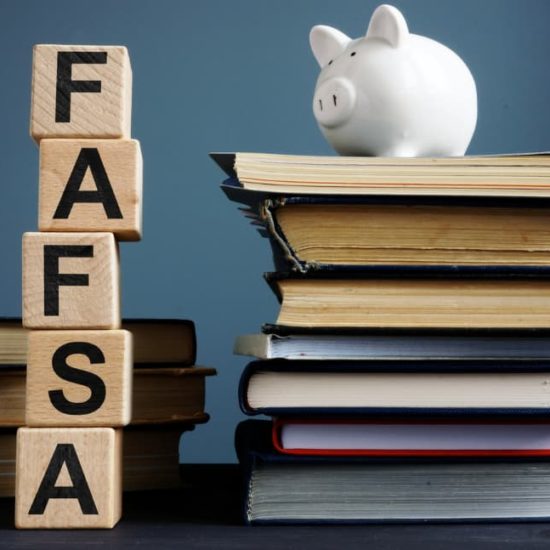Common Mistakes to Avoid When Filling Out the FAFSA
One of the top prerequisites for obtaining financial aid is filling out a Free Application for Federal Student Aid (FAFSA). Your preferred institution of choice will use your information in the FAFSA to determine your eligibility for university grants and scholarships. The government may also use your FAFSA information to determine your necessary loan or grants.
Considering that almost 20 million people apply for the FAFSA annually, you must fill in the form appropriately and accurately to secure your chances of getting financial aid. When done right, you have an 85% chance of getting financial help.
NYADI The College of Transportation Technology, in Jamaica, NY, can help you avoid simple mistakes that could render your form invalid or incomplete. To increase your chances, check out the following seven critical mistakes to watch out for and get student financial aid.
Doubting Yourself
Many people don’t even try to fill out the FAFSA form despite being eligible. For instance, in the 2020-2021 school year, 32% of eligible students didn’t fill out the form. Most students complained about the process being too challenging or felt they wouldn’t be successful either way.
Remember, besides the Pell Grants, the FAFSA form can also help you acquire federal student loans, work-study funding, state, school, and private organization scholarships and grants.
Forgetting the Financial Aid Deadlines
There are three key deadlines to remember when submitting your FAFSA form. These include:
The College Deadline
FAFSA deadlines differ from one school to another. Many schools will often give FAFSA deadlines that are far in advance of the academic year. Before you submit your FAFSA, find out the deadline for each college you want to apply to, and do so early to increase your chances of receiving the maximum amount of aid. Observe the priority FAFSA submission deadlines for the specific colleges. These dates can appear on the financial assistance websites for many institutions.
The State Deadline
Your home state often will determine the second deadline for your FAFSA application. Some states have strict deadlines, while others offer suggested dates, guaranteeing that you receive priority for financial aid for education. Because of the limited financial resources, several states’ FAFSA deadlines are unusually early. You should submit your FAFSA application as soon as possible if your state indicates a deadline. In New York, the deadline is generally June 30.
The Federal Deadline
The US Department of Education gives the last deadline for your FAFSA form submission. After that, you cannot access the form. In most cases, their deadline is on June 30 of each year. So, apply as soon as possible to avoid missing the federal deadline.
Forgetting Your Federal Student Aid Login or Application Information
You must create an ID with a username and password when requesting federal student aid and use that information when submitting your financial data. Without the ID, FAFSA won’t process your data. Ensure you have a FAFSA ID before the FAFSA application period begins. If you previously received financial help, ensure that you can log in and verify that your account is set. You will have to create an account if you don’t already have one.
Submitting an Incomplete FAFSA Form
If you omit some information in your application form or provide an incorrect Social Security number or driver’s license, your application may not go through. Verify all the information on your FAFSA is accurate, and make sure no information is missing before submitting the form.
You must pay attention to any letter that the Department of Education sends to you requesting additional details. For instance, you might need to provide more documentation to show your household income. Fortunately, FAFSA permits the modification of data, and you can log in to your account to change some information before the process is complete.
Not Naming Every School You’re Considering
On your FAFSA form, include each potential school you may be considering. You can choose up to 10 schools, but you should change the list once you’ve discarded some schools. If you want to indicate your preferred college, adjust the sequence of the colleges on your FAFSA form, putting your most preferred college on top.
Not Separating Your Information From That of Your Parents
Financial data for both the student and their parents should appear separately on the FAFSA form. This way, the government can quickly evaluate your family’s financial situation. Through this information, the government will adjust your aid accordingly.
Failing to Distinguish Yourself as a Dependent Student
According to the Federal Student Aid office, the information you provide on your FAFSA form helps to determine whether you’re a dependent or independent student. Congress sets the dependency standards for financial aid distinct from those set by the IRS.
If you are a dependent student and don’t include parent information, your FAFSA application may be unsuccessful. You should also include other students in your household who’re also dependent. The federal government will use this information to determine an expected financial contribution (EFC) for your family.
Visit NYADI for Answers to Student Financial Aid Questions
At NYADI The College of Transportation Technology, we do not want you to miss out on your student financial aid. We’re here to help you avoid mistakes that could make your application invalid. Always mark your calendar, so you don’t forget to fill out your FAFSA form. Remember the three essential deadlines to ensure your application goes through.
In addition, have a list of all the schools you want to join and check for an incomplete form before submission. Lastly, failing to identify as a dependent would jeopardize all your hard work. If you still have challenges with your FAFSA form, feel free to contact our administration representatives at our campus in Jamaica, NY.



